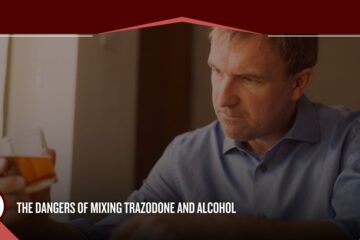Alcohol addiction can impact every part of your life. It can take a toll on your health, relationships, and opportunities for the future. Seeking treatment for alcohol addiction is one of the most life-affirming decisions you will ever make. However, recovering from addiction can be very challenging.
Professional treatment and ongoing support can help you manage challenges during detox. People with alcoholism typically experience physical and psychological withdrawal symptoms when they stop drinking. Some of these symptoms can be life-threatening.
One potential risk of alcohol withdrawal is a condition called delirium tremens (DTs). Delirium tremens is a rare but life-threatening condition that can develop during detox.
This article will detail delirium tremens. You will learn:
- What happens to the body during addiction and withdrawal
- What causes delirium tremens
- The symptoms of DTs
- What to expect during treatment for delirium tremens
- Where to find treatment and support for addiction
If you or someone you love struggles with alcohol abuse or addiction, you are not alone. Contact the Alamo Behavioral Health specialists to explore our treatment programs or to set up an intake assessment.
Alcohol Addiction and Withdrawal
Alcohol use is legal and common in many areas of the United States. Over half of all adults in the United States report drinking at least occasionally.[1] Many people drink heavily or engage in binge drinking. Up to half of adults who binge drink do so many times each month.[1]
It can be challenging to recognize addiction until the consequences have become severe. However, alcohol addiction can quickly become life-threatening. It is critical to recognize the signs of addiction and seek treatment right away.
Some common signs of alcohol abuse and addiction include:
- Taking risks while drinking, such as driving under the influence or having unprotected sex
- Needing to drink more to feel the effects of alcohol or being able to drink a lot without feeling or appearing drunk
- Experiencing withdrawal symptoms like nausea, insomnia, sweating, shaking, or anxiety when not drinking
- Neglecting responsibilities, relationships, or hobbies because of drinking
- Having legal, social, or financial hardships associated with drinking
Alcohol depresses central nervous system (CNS) activity.[2] Heavy alcohol use can lead to short-term effects, including:
- Impaired judgment
- Nausea and vomiting
- Changes in focus, attention, and memory
- Lowered inhibitions
- Loss of coordination
- Overdose
People who drink heavily may face an increased risk of long-term effects, including:
- Increased risk of certain cancers
- Higher risk of heart attack and stroke
- Cognitive changes that affect thinking and memory
- Liver damage
People with alcohol addiction must get help to safely stop drinking and avoid relapse. Reducing alcohol or stopping abruptly can lead to withdrawal.
Alcohol withdrawal symptoms develop when a person’s body has adjusted to the presence of alcohol. This can occur after a period of heavy drinking. Common withdrawal symptoms include:
- Nausea
- Anxiety
- Agitation
- Tremors
- Excessive sweating
- Vomiting
- Insomnia
Some people develop more severe withdrawal symptoms, including seizures.[3] In rare cases, people may develop a deadly condition called delirium tremens.
Delirium Tremens: Recognizing the Symptoms
Alcohol slows CNS activity. The body increases CNS activity to counteract alcohol’s sedative effects. When people with alcohol use disorder (AUD) stop drinking, their bodies continue to remain in a state of increased CNS activity. This causes withdrawal symptoms.
In rare cases, people may develop a condition called delirium tremens (DTs) or alcohol withdrawal delirium. Symptoms of delirium tremens include:
- Tremors
- Excessive sweating
- Extreme confusion
- Extreme agitation
- Combative or aggressive behaviors
- Psychosis
- Visual and auditory hallucinations
- Elevated heart rate
- Dangerously high body temperature
- Elevated blood pressure
- Sensory changes that reduce awareness of the environment
- Seizures
- Cardiovascular collapse
People can develop delirium tremens very quickly. Developing symptoms of DTs is a life-threatening medical emergency. If someone near you exhibits symptoms of this medical condition, call 911 immediately. You may also bring them to your nearest emergency room.
Understanding the Causes of DTs
More than 50% of people with AUD experience withdrawal symptoms when they stop drinking, and anyone with alcohol withdrawal may develop DTs.[4] However, medical experts believe there are significant risk factors for delirium tremens. They include:
- A personal history of seizures
- A history of developing DTs during previous detoxes
- Heavy alcohol intake
- Long periods of excessive drinking
- Pre-existing medical conditions
- Older age
- Multi-substance abuse
About 3-5% of people with AUD will develop delirium tremens during detox.[4] It is crucial to have medical supervision and support during detox to avoid life-threatening complications, including DTs.
Treating Delirium Tremens
Delirium tremens is a life-threatening condition. Without treatment, it has an estimated mortality rate of up to 37%.[4] Early intervention and treatment are essential to avoid coma or death.
There are no medications to “cure” DTs. Medical specialists can diagnose delirium tremens using screenings and tests and then provide life-saving treatment.
Alcohol withdrawal is best managed at a detox facility. Treatment for delirium tremens includes:[5]
- Medications to reduce CNS activity
- Benzodiazepines or other sedatives to calm CNS activity and reduce symptoms
- IV fluids and supplements to support the body’s health
People with DTs may spend time in an intensive care unit (ICU) before transitioning to another level of care. The length of treatment depends on the severity of a person’s symptoms and other factors.
After a safe detox, those struggling with alcohol use disorder are encouraged to transition to a complete treatment program. Alcohol abuse treatment can help prevent relapse and recurring episodes of withdrawal or DTs.
Find Help Now
If you or someone you love lives with alcohol abuse or addiction, you are not alone. Alamo Behavioral Health aims to ensure a safe and comfortable detoxification experience with constant medical supervision and appropriate interventions. Contact the Alamo Behavioral Health specialists now to find comprehensive treatment and support. Take the first step of your recovery journey by reaching out today.
References:
- Centers for Disease Control and Prevention (CDC): Data on Excessive Drinking
- National Institutes of Health (NIH): Alcoholism and its effects on the central nervous system
- NIH: Alcohol Withdrawal Syndrome
- NIH: Delirium Tremens
- Wiley Online Library: Clinical management of the alcohol withdrawal syndrome





